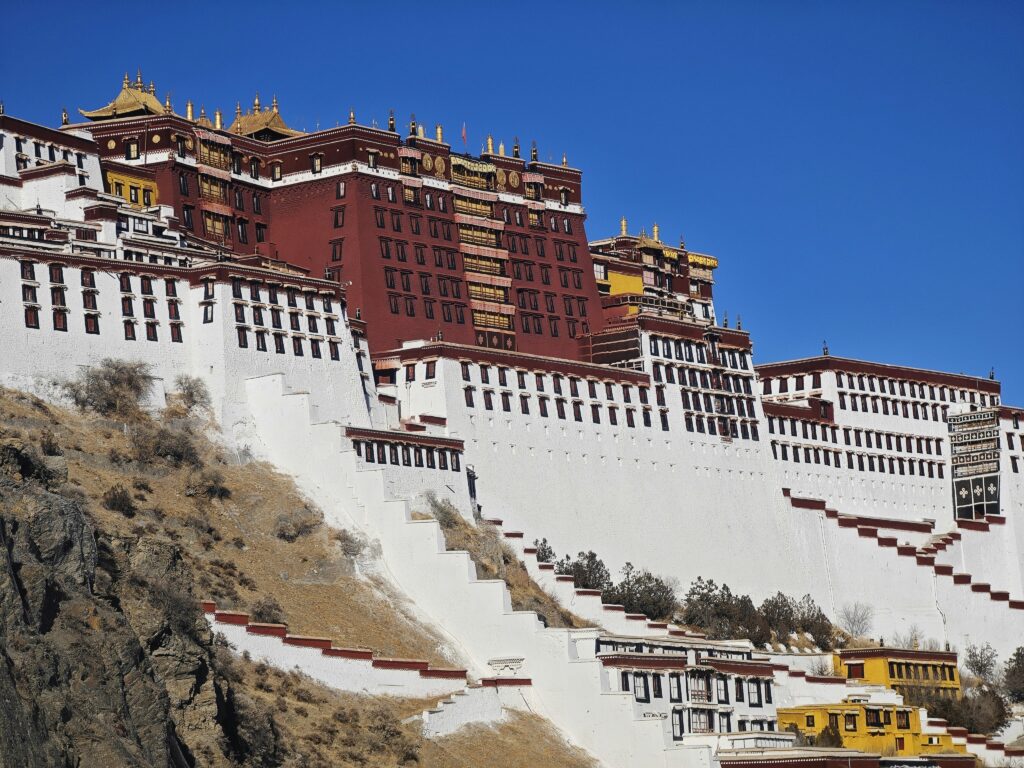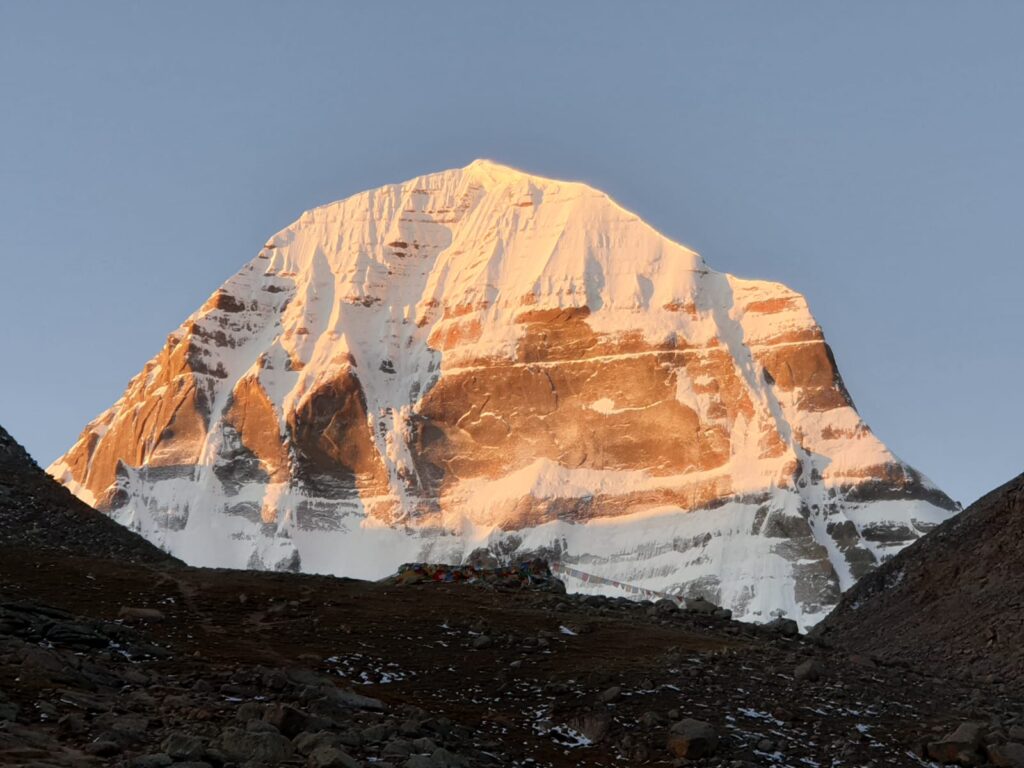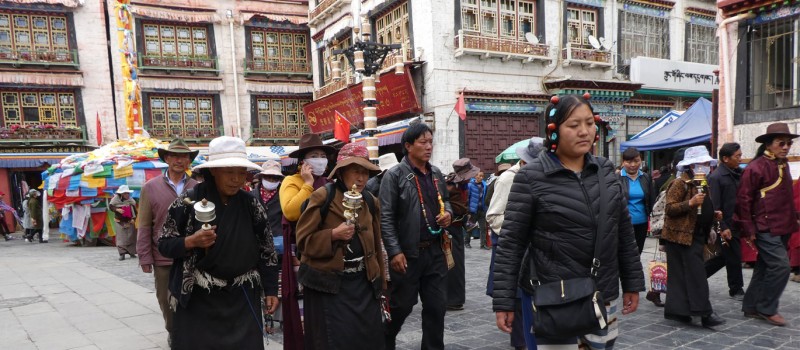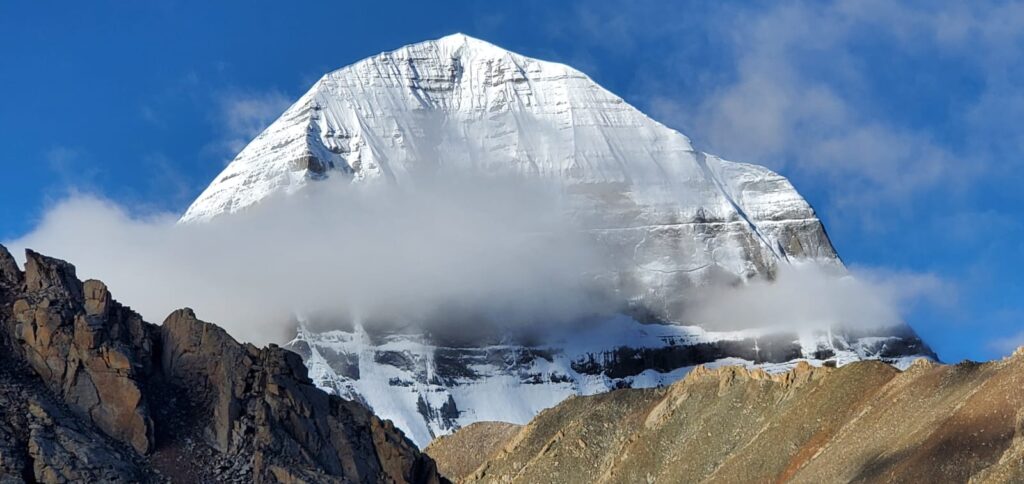Planning for a Tibet Tours? Whether you’re drawn to its spiritual heritage, breathtaking landscapes, or thrilling treks, this comprehensive guide has you covered. From understanding visa requirements and travel permits to exploring the cultural significance of the Potala Palace and Mount Kailash, we answer all your burning questions about Tibet tours. Discover the best time to visit, how to prepare for high altitudes, and what to pack for an unforgettable adventure. Dive into the rich traditions of Tibetan Buddhism, learn about local customs, and get practical tips on transportation, accommodations, and safety.
Looking for adventure? We’ve got you covered with insights into trekking routes like Mount Kailash and Everest Base Camp, along with tips on acclimatization and camping. Whether you’re a solo traveler, a culture enthusiast, or an adventure seeker, this guide provides everything you need to plan your dream trip to Tibet. Let us help you navigate the mysteries of the Roof of the World and make your journey as seamless and enriching as possible.
Do I need a visa for Tibet Tours?
Yes, you need a Chinese visa for Tibet Tours. Additionally, foreign travelers must obtain a Tibet Travel Permit, which is arranged by a licensed Tibetan travel agency. Without these documents, entry to Tibet is not permitted.
What is a Tibet Travel Permit, and how do I get one?
A Tibet Travel Permit is a mandatory document for foreign tourists visiting Tibet. It can only be arranged through a registered Tibetan travel agency as part of a guided tour. Your agency will handle the application process, which typically takes 7-15 days.
Can I travel independently in Tibet, or do I need a guided tour?
Independent travel is not allowed in Tibet. Foreign tourists must book a guided tour through a licensed travel agency, which will arrange all permits, transportation, and accommodations.
What is the best time for Tibet tours?
The best time for a Tibet tour is from April to October when the weather is mild and stable. May and September are particularly popular for clear skies and comfortable temperatures, ideal for sightseeing and trekking.
How do I prepare for high altitude in Tibet?
To prepare for high altitude in Tibet:
- Spend 2-3 days in Lhasa to acclimatize.
- Stay hydrated and avoid strenuous activity initially.
- Consult a doctor about altitude sickness medication (e.g., Diamox).
- Avoid alcohol and smoking during the first few days.
What are the must-visit places during Tibet tours?
The must-visit places in Tibet include:
- Lhasa: Potala Palace, Jokhang Temple, and Barkhor Street.
- Mount Everest Base Camp: For breathtaking views of the world’s highest peak.
- Lake Yamdrok: A stunning turquoise lake.
- Mount Kailash: A sacred pilgrimage site.
- Shigatse: Home to the Tashilhunpo Monastery.
How much does a Tibet tour cost?
The cost of a Tibet tour varies based on duration, group size, and itinerary. On average, a 7-10 day tour costs between 1,000to1,000to2,500 per person, including permits, accommodations, transportation, and guide services.
Is it safe to travel to Tibet?
Yes, Tibet is generally safe for tourists. However, travelers should be mindful of high-altitude risks, follow local regulations, and travel with a licensed guide. Political sensitivities also require respectful behavior toward local customs and authorities.
What is the weather like in Tibet?
Tibet’s weather varies by season:
- Spring (April-May): Mild and pleasant, ideal for travel.
- Summer (June-August): Warm but rainy in some regions.
- Autumn (September-October): Clear skies and cool temperatures.
- Winter (November-March): Cold and dry, with fewer tourists.
Can I visit Mount Everest from Tibet?
Yes, you can visit Mount Everest from Tibet. The North Base Camp in Tibet offers stunning views of Everest and is accessible via a guided tour. The best time to visit is from April to October.
What is the significance of the Potala Palace?
The Potala Palace in Lhasa is a UNESCO World Heritage Site and the former winter residence of the Dalai Lama. It symbolizes Tibetan Buddhism and culture, housing countless artifacts, murals, and sacred scriptures. It is a must-visit for its historical and spiritual importance.

Can I attend a Buddhist ceremony during the Tibet Tour?
Yes, you can attend Buddhist ceremonies in Tibet, especially during festivals like Saga Dawa or at monasteries such as Jokhang Temple and Sera Monastery. However, always show respect by following local customs and seeking permission before taking photos.
Are there any festivals in Tibet that tourists can attend?
Yes, tourists can attend Tibetan festivals such as:
- Losar (Tibetan New Year): Celebrated in February or March.
- Saga Dawa: Honors Buddha’s birth, enlightenment, and death, usually in May or June.
- Shoton Festival: Features Tibetan opera and the unveiling of giant thangkas, held in August.
What is the history of Tibetan Buddhism?
Tibetan Buddhism originated in the 7th century and combines teachings from Indian Buddhism with indigenous Bon practices. It is known for its unique practices, such as meditation, mantra recitation, and the veneration of the Dalai Lama.
How do I show respect when visiting monasteries in Tibet tours?
To show respect in Tibetan monasteries:
- Dress modestly and remove hats.
- Walk clockwise around stupas and sacred objects.
- Avoid pointing at or touching religious artifacts.
- Ask for permission before taking photos of monks or rituals.
Are there any restrictions for tourists in Tibetan monasteries?
Yes, tourists must follow certain rules in Tibetan monasteries:
- Photography may be restricted in certain areas.
- Avoid loud conversations or disruptive behavior.
- Do not sit or step on sacred objects or altars.
- Always follow your tour guide’s guidance.
What is the importance of Mount Kailash in Tibetan culture?
Mount Kailash is considered the most sacred mountain in Tibetan culture, revered as the abode of deities and a site of spiritual enlightenment. Pilgrims perform the Kora (circumambulation) around the mountain to gain merit and cleanse sins.
Can I participate in a kora (circumambulation) in Lhasa?
Yes, you can participate in a kora in Lhasa. The most popular kora routes are around Barkhor Street and Lingkhor Circuit, where pilgrims walk clockwise while chanting prayers and spinning prayer wheels.
What are the customs and traditions of the Tibetan people?
Tibetan customs and traditions include:
- Greeting with a slight bow and hands pressed together.
- Offering and receiving items with both hands.
- Avoid touching someone’s head, as it is considered sacred.
- Participating in festivals and rituals with reverence.
Is it okay to take pictures of monks or locals?
Always ask for permission before taking pictures of monks or locals. Some may decline, especially during religious activities. Avoid using flash in monasteries, as it can disturb the sanctity of the space.
How do I get to Tibet from Nepal?
You can travel to Tibet from Nepal by flight or overland. The most common route is a flight from Kathmandu to Lhasa, which takes about 1.5 hours. Alternatively, you can take a scenic overland journey via the Friendship Highway, which requires a Tibet Travel Permit and a guided tour.
Can I fly directly from my country to Lhasa?
There are no direct international flights to Lhasa. Most travelers fly to major Chinese cities like Beijing, Chengdu, or Kathmandu (Nepal) and then take a connecting flight or train to Lhasa. Chengdu is the most popular hub for flights to Tibet.
What is the Tibet Railway, and how do I book tickets?
The Qinghai-Tibet Railway is the world’s highest railway, connecting mainland China to Lhasa. It offers breathtaking views of the Tibetan Plateau. Tickets can be booked through a travel agency or online platforms like Ctrip, but foreign tourists must have a Tibet Travel Permit to board.
Are there ATMs and currency exchange facilities in Tibet?
Yes, ATMs and currency exchange facilities are available in major cities like Lhasa and Shigatse. However, carrying enough cash (Chinese Yuan) is advisable as ATMs in remote areas may be unreliable.
What is the internet and phone connectivity like in Tibet?
Internet and phone connectivity are available in cities like Lhasa but can be limited in remote areas. Most hotels and restaurants offer Wi-Fi, though speeds may vary. Purchasing a local SIM card is recommended for better connectivity.
Can I use credit cards in Tibet, or is cash preferred?
Cash (Chinese Yuan) is preferred in Tibet, especially in rural areas. While some hotels and larger shops in cities accept credit cards, smaller establishments, and monasteries do not. Always carry sufficient cash for daily expenses.
What kind of transportation is available during the Tibet Tours?
Transportation options during the Tibet tour include:
- Private vehicles: Arranged by travel agencies for guided tours.
- Public buses: Available in cities like Lhasa but not recommended for tourists.
- Tibet Railway: Connects major cities and offers stunning views.
- Flights: Connect Lhasa with other Tibetan cities and mainland China.
Are there any health precautions I should take before the Tibet tour?
Yes, health precautions for Tibet tour include:
- Acclimatizing slowly to avoid altitude sickness.
- Staying hydrated and avoiding alcohol.
- Carrying medications for headaches, nausea, and diarrhea.
- Consulting a doctor about altitude sickness pills like Diamox.
What language is spoken in Tibet, and will I need a translator?
The primary language in Tibet is Tibetan, but Mandarin Chinese is widely spoken. English is not commonly understood, so having a guide or translator is highly recommended, especially in remote areas.
Are there any restricted areas during Tibet tours for tourists?
Yes, some areas in Tibet require additional permits, such as the Aliens’ Travel Permit or Military Permit, especially for regions near borders or sensitive locations. Always check with your travel agency to ensure you have the necessary documentation.
Can I trek to Mount Everest Base Camp from Tibet?
Yes, you can trek to Mount Everest Base Camp (North Side) in Tibet. The trek starts from the Rongbuk Monastery and offers stunning views of Everest. A Tibet Travel Permit and a guided tour are required for this adventure.
What is the difficulty level of the Mount Kailash trek?
The Mount Kailash trek (Kora) is considered moderately challenging due to its high altitude (up to 18,500 feet) and rugged terrain. It requires good physical fitness and proper acclimatization. The full Kora takes 2-3 days to complete.
Are there guided treks available in Tibet?
Yes, guided treks are available in Tibet and are mandatory for foreign tourists. Licensed travel agencies offer guided treks to popular routes like Mount Kailash, Everest Base Camp, and Ganden to Samye.
What is the best time for trekking in Tibet?
The best time for trekking in Tibet is from May to October when the weather is mild and stable. September is particularly ideal for clear skies and comfortable temperatures.
What should I pack for a trek in Tibet?
Essential items for a Tibet trek include:
- Warm, layered clothing for varying temperatures.
- Sturdy hiking boots and waterproof gear.
- Sunscreen, sunglasses, and a hat for UV protection.
- A reusable water bottle and high-energy snacks.
- Altitude sickness medication and a basic first-aid kit.
Are there any age restrictions for trekking in Tibet?
There are no strict age restrictions, but trekking in Tibet requires good physical fitness due to the high altitudes and challenging terrain. Older travelers or those with health conditions should consult a doctor before planning a trek.
Can I camp during a trek in Tibet?
Yes, camping is allowed during treks in Tibet, especially on routes like Mount Kailash and Everest Base Camp. Most guided tours provide camping equipment, but you can also bring your gear.
How do I acclimatize to the high altitude during a trek?
To acclimatize during a trek:
- Spend 2-3 days in Lhasa or a lower-altitude area before starting.
- Stay hydrated and avoid alcohol.
- Ascend slowly and take rest days if needed.
- Consult a doctor about altitude sickness medication like Diamox.
Are there emergency services available during treks?
Emergency services in remote trekking areas are limited. It’s essential to travel with a licensed guide who can handle emergencies. Carry a satellite phone or emergency beacon for added safety.
What are the most popular trekking routes in Tibet?
The most popular trekking routes in Tibet include:
- Mount Kailash Kora: A spiritual trek around the sacred mountain.
- Everest Base Camp (North Side): Offers breathtaking views of Everest.
- Ganden to Samye Trek: A scenic route connecting two historic monasteries.
- Tsurphu to Yangpachen Trek: Known for its hot springs and stunning landscapes.


